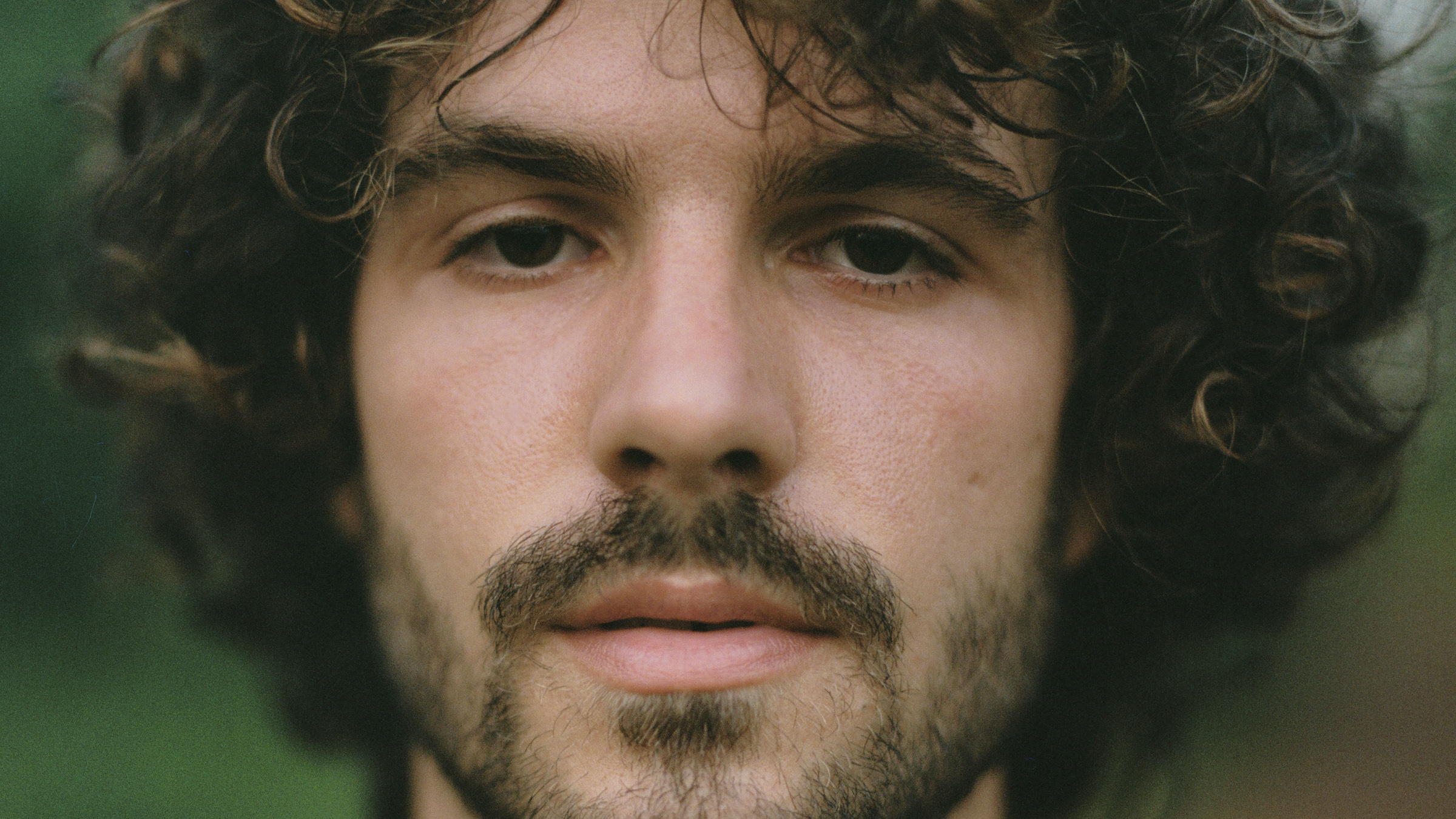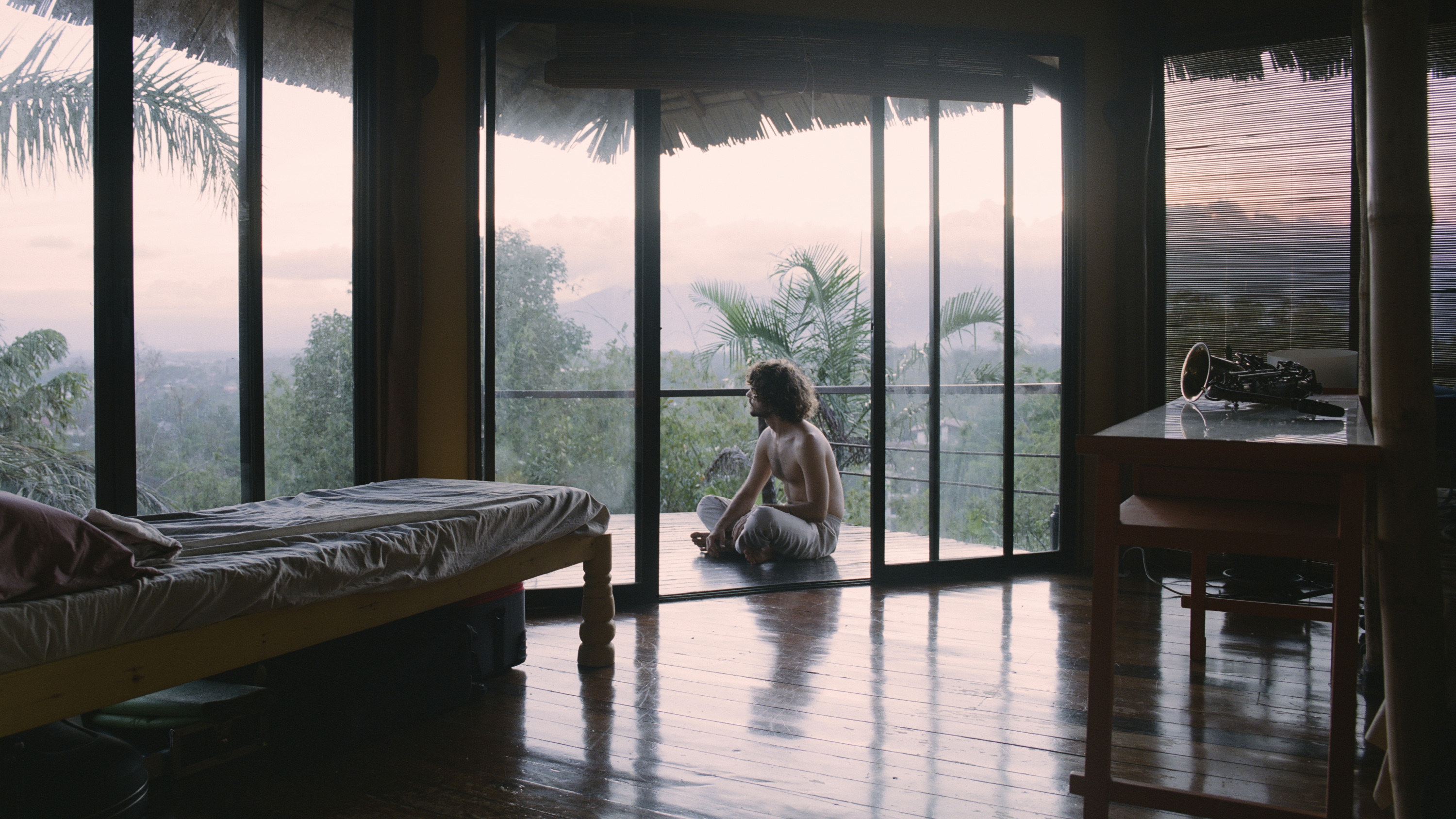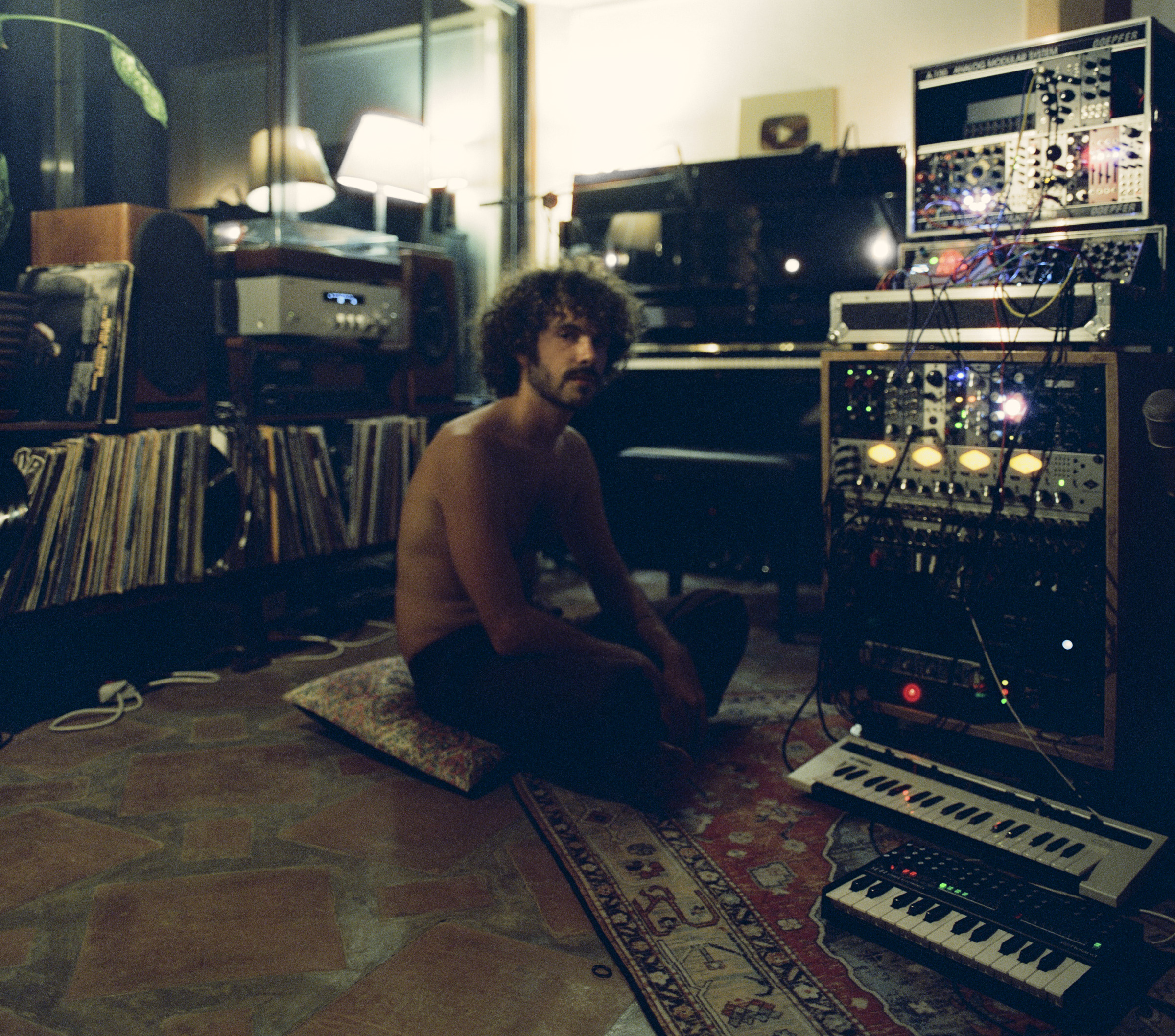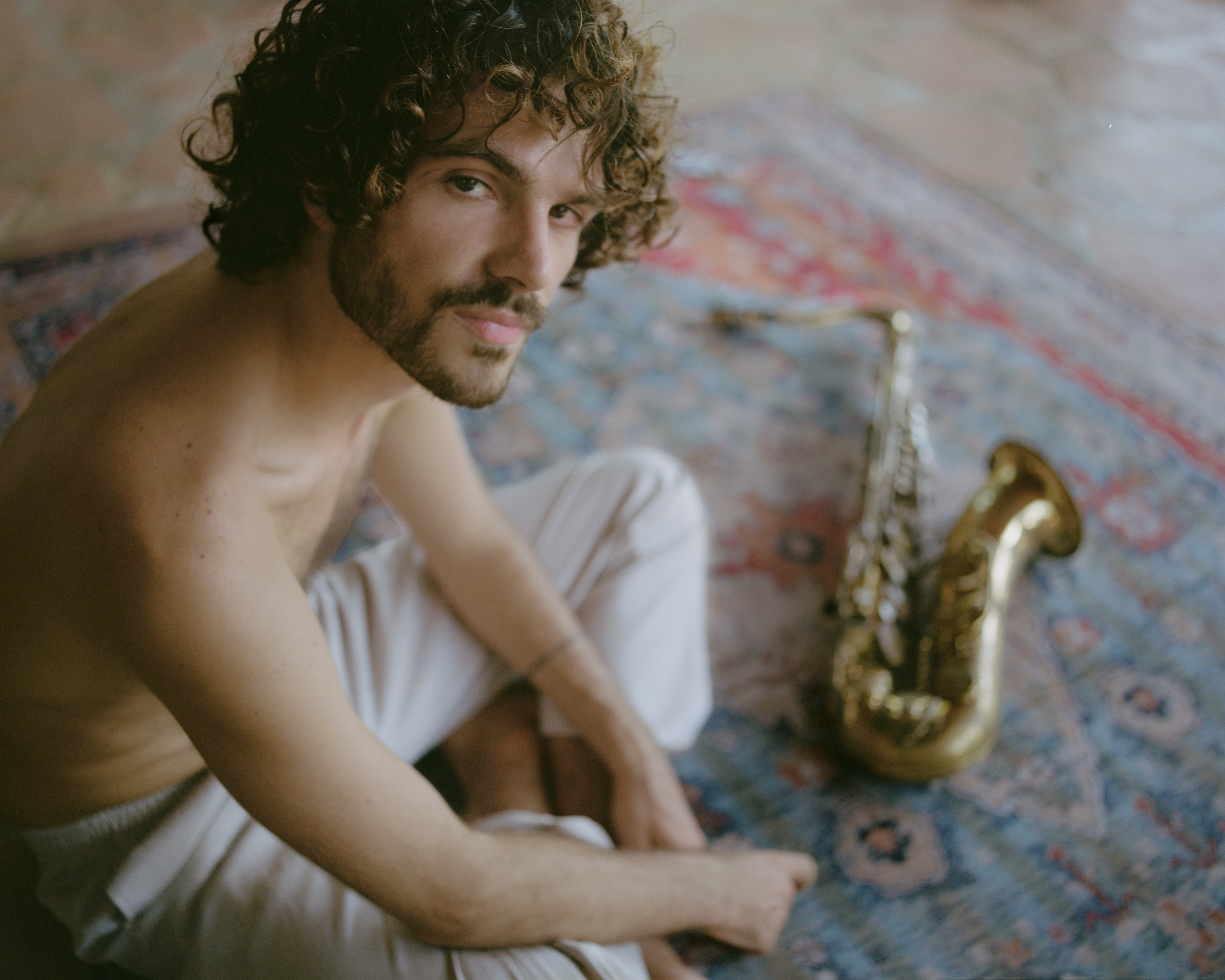FKJ: "I don’t think there’s any MIDI on this album - I find clicking on a laptop very uninspiring"
FKJ returns with a brilliant new album, boasting contributions from Little Dragon, Toro Y Moi and guitar legend Carlos Santana. Hamish Mackintosh finds out more about the spaces in between

FKJ (or French Kiwi Juice as he’s erstwhile been known) is the brainchild and soul-mission of French producer/multi-instrumentalist Vincent Fenton, who has garnered quite the name for himself with his virtuoso improvised one-man live sets, centred around Ableton Live, an Akai APC40 MkII and then whatever flight of fancy his synths, guitars, saxophones and vocals care to follow.
VINCENT is a move away from the French house of his 2017 debut, French Kiwi Juice, and sees FKJ enjoy the musical fruits of moving his studio from Paris to the new home he shares with wife (and album contributor) June Marieezy (AKA (((O)))) in her native Philippines.
And there are so many fruits to enjoy: the laid-back summer vibes of VINCENT showcase an artist opening himself up to the inspirations of his new surroundings and flexing his not-inconsiderable musical wings.
With a series of live shows coming up, we caught up with FKJ during a break from rehearsals in London along with Dolby Atmos’s Oli Morgan (who collaborated with FKJ on the Atmos version of the album) to talk spaces, places and musical phases.

Decamping your studio from Paris to the Philippines feels like it’s given your music more space and groove, if that’s fair to say?
Vincent: “Yeah, it’s definitely changed with the new environment. I’m just a sponge, at the end of the day. When I started out making music in Paris, I was going out to clubs a lot and seeing artists I like perform so my music then was more four-to-the-floor electronic music. Then, when I met June (also known as ((( O )))) and started going to the Philippines, then eventually moving there, my music - especially doing this album during the pandemic - was way more contemplative.
"It just didn’t lend itself to laying down 4/4 electronic beats over there, as I was making the soundtrack to my environment.
Want all the hottest music and gear news, reviews, deals, features and more, direct to your inbox? Sign up here.
"So, my music changes with the environment and keeps changing. Wherever I am next year, probably on tour a lot, it will influence my music for sure.”
On this new album you’ve taken a more unconventional route with your drum sounds, did it take a long time to build your new palette of percussive elements?
“No, the change of sound in the percussive and rhythmic parts came from me getting into modulars so, my laptop was more of a recorder for this album. I didn’t really use it to produce… everything was recorded as audio from modulars and various synths.
"So, the difference in sound and rhythm came from me getting some new toys, really, and those new toys opened new doors for me in terms of sound design. I was able to play and change those patterns on the modular in real time rather than just having the same sounds looping.”
Any machines in particular we need to thank for the new sounds?
“Just different modules… I have a lot of them now so, when I’m having fun creating something new it goes through a lot of different chains, from the synths to the filters to the delay then the VC8, there’s a lot going on. Also, I got my first drum kit during the pandemic so I would layer that and the modular percussions together.”

You have a background in audio engineering, which must come in very handy for the music you make and the way you create it?
“For sure. It’s helped me since I started and it’s really the reason I wanted to study sound in the first place. I’ve been making music since I was 13, making guitar and keyboard compositions going straight into a soundcard with no processing at all. I kind of figured out the music part but I hadn’t figured out the sound part, which was why I wanted to go there in the first place to study the science of sound.”
If we've read it right, Let's Live was the first track off the album to be mixed in Dolby Atmos?
Oli Morgan: “Yeah, that was the first one we did from stems then mastered. Then we mastered the rest of the album in stereo then Atmos’d the rest of them.”
Vincent: “We’d actually mixed and mastered the album initially because I always mix and master all my music. I sent it to be pressed to vinyl but there was something not right in terms of distortion so that was when I was put in contact with Oli, and we decided to remaster the vinyl version of the album. While we were doing that, Oli brought up the idea of stem-mastering in Atmos, so we tried it on Let's Live then just did the whole album.”
Oli, do you prefer working with stereo stems?
OM: “If I can get all the stems then it’s great, as you can always then choose not to touch the stems, then it’s just like you’re dealing with a stereo mix. With lots of this album, Vincent’s mixes were amazing, so I didn’t need to do anything to them… actually some of the final versions are Vincent’s masters.
"So, if I have access to the stems, you can always not touch stuff then end up where you would’ve been anyway, but you still have that access to do more to something if you need to. So, it’s about options, really.”

Obviously, you have skin in the game. but what would you say Dolby Atmos brings to a project?
OM: “The most obvious one is the space… particularly when you’re in the room with it and being able to actually put stuff in places they should belong in rather than having to use tricks to pretend. You’re not having to use phase tricks or little delays to pretend you make the space… you just have the space!
"So, with the kind of music Vincent’s making and the mixes he’d already done, we just spread things out a little more. It wasn’t more complicated than simply making a bit more space for stuff.”
There’s a move towards headphones happening with Dolby Atmos at the moment, isn’t there?
OM: “Yeah, but the real impact is in having a setup in a proper room. So, you start in a cinema screening room, that’s your gold standard, then you work your way back to headphones… that’s the journey. The journey is getting smaller as the headphones are getting better. I’ve particularly enjoyed listening to this album on Apple Music… it sounds great.”
Tell us a little bit about the Audiomovers software you used to collaborate on?
OM: “ListenTo is their plug-in, which gives you full resolution streaming on a private link. That was great for when we needed to do little tweaks on things and also the tracks where we were using Vincent’s masters, we could just listen immediately to what was going on.”

Vincent, do you see the next FKJ album being written with a Dolby Atmos version in mind too?
Vincent: “It’s a lot of work but the more people that get into it then the more I’ll want to do it. If I put a lot of time into doing it, then I want as many people as possible to enjoy it, including myself. I studied sound in cinema so, back then, I was mixing sound for the image in 5.1 and even in 7.1 sometimes. So, it’s nice to come full circle and finally be able to do that with my own music.
“I found that to be really exciting back then, getting all the different audio sources for a particular movie and spreading them, putting them in the space and also narration, as you can tell stories with that space. That’s interesting now, combining music, foleys and sound design. I do it already in stereo on this album but with this, the most obvious thing is space because you can add more things in a song.
“Sometimes in stereo you have to limit yourself or maybe there’s too much going on and you can’t space it out anymore, but with Atmos you can keep adding things without it feeling overcrowded.”
As brilliant as working in the box is, it’s refreshing to hear an album that’s steadfastly refused to be in the box. Do you think we’ll see a move back towards proper studios again at any point?
“You can do amazing things with computers and DAWs, and I don’t see it as a problem at all so long as the artist, or the engineer working with the artist, knows what they’re doing in the box. I’ve worked in the box up until now but this time it was refreshing to have an external pair of ears on my mixes.
With Atmos you can keep adding things without it feeling overcrowded
“The reason I’ve always done it on my own previously was just convenience… if I’d listen back to the song and maybe one element too much then I could straight away go into it and take out that element, bounce and master the mix again without having to pay for another studio session or wait for another engineer to be available.
“With this project, the tracks were all finished, and I was done with it for a few months, then working on the stem mastering with Oli made me realise things that I wouldn’t have realised on my own. Some of the songs didn’t need anything but others were very muddy, so I think it's really helpful to have someone else involved who is listening to it with a fresh pair of ears.”
So, a welcome additional opinion for the autonomous artist/producer then?
“Yeah, I like it and I think that the solo experience is just the way I’ve always made music. For me, wherever my studio is at any time, then that’s my safe place where I can gather my thoughts, and that will always be the case. But doing things alone you can lose things at certain points and need to take a step back and maybe get a different perspective. I would definitely recommend getting another pair of ears on something if you work alone.”

At your studio does everything go down to tape or DAW?
“I mostly use a DAW, mainly as a recorder, I don’t use many plugins. I also have a Tascam Model 12, which is actually a mixer that has a digital recorder inside. So, I’ll use that when I don’t want to look at a screen at all, I just want to be listening. I try to stay minimal so, when I use the Tascam it’s to try and keep things simple - limitations are a good thing.”
OM: "Do you then dump stuff from the Tascam on to Ableton?"
Vincent: “Yeah, I do that at the end. It’s mainly for ideas and the recording process that I love not having a screen. The great thing about it is you can plug the Tascam into your laptop, and everything shows up, all the different tracks.”
We might be wrong, but it doesn’t sound as if you have a lot of need for MIDI on this new album?
“I don’t think there’s any MIDI on this album… it’s all coming from audio sources. It’s more fun to work that way as I find clicking on a laptop very uninspiring. I just want to enter the room and start playing straight away, as that’s where the inspiration comes from.”
When you made your move from Paris to the Philippines what were the essential pieces of kit you knew you had to take with you?
“Well, one of each instrument I play so, one main bass, one main guitar, one keyboard but I did it gradually, I didn’t bring everything at once.
"If I had to pick just one thing then it would be a keyboard, for sure. If I just had a keyboard, then I’d probably use more of a mix of MIDI and audio. Pretty much everything I have is there now.
I just want to enter the room and start playing straight away, as that’s where the inspiration comes from.
“I love the SCI Six-Trak. It’s a very simple synth but a great sounding analogue. If you’re talking about keys in general, then I use the piano as my main instrument. It’s there and it doesn’t have to be switched on. I use the Roland SE-02, which is similar to a Minimoog, but you can save everything on it, which is very practical.
“For live, I use Korg keyboards, either the Kronos or the Nautilus. I have the Nord Lead A1 for all my leads and bass during the live show. If I’m travelling, I always have the Yamaha Reface CS with me. It sounds great, the keyboard has such a great action for a small keyboard and its battery powered if I want to use it on a plane.”
Are you going to tour Vincent doing solo gigs or will there be other musicians involved?
“I’ve always done shows on my own but this year there will be some shows where there’s going to be some surprises. I won’t say much about it as it’s still coming together.”
When you collaborated with legendary guitarist Santana on the track, Greener, or Little Dragon on Can’t Stop, did you collaborate live over the internet?
“For Santana, I just sent the stems to his engineer, and they sent me back 10 takes they’d edited in the studio. They had a reference track that they preferred so mine was inspired by that but slightly different, so I sent it back and they were happy with it.
"For Little Dragon, I just sent her a stereo track, she did her thing and sent me those takes, I did my thing and we just exchanged ideas until everyone was happy with it.”
Is there more FKJ music in the pipeline?
“Yes, I’m always making music. There’s a lot I want to release from things I’ve already done. Right now, I’m focusing on my live show but as soon as I’m done with it, I’m going to go back to what’s next.”
Is quality control becoming harder for musicians in the age of infinite possibilities?
“I don’t think creating too much is a bad thing, but you need to take a step back, let the songs sit, then come back to it with a fresh ear to help you work out what sounds interesting, what actually goes together or what kind of story you want to tell with the music. Even if you make tracks that you never use, it’s always serving a purpose. You’re always learning from whatever you’re doing, even if it’s crap, you’re still learning from it."
Even if you make tracks that you never use, it’s always serving a purpose.
“I’m building a new studio at the moment so for me the important thing is going to be the environment rather than lots of new gear. There’s plenty to be done with what I already have. I’ve been doing this 8 years, so I have a lot of instruments now. I could have way more, but I just like focusing and exploring a bit of gear as much as you possibly can.
“I think it’s dangerous to get too much gear. I love limitations. It would be an interesting concept to make an album with just a set amount of gear. I think limitations can be inspiring and too many choices can be overwhelming. I think that’s why I don’t really work with plugins because they’re not even a piece of gear, they’re just things on a computer with so many layers that go so deep. That’s why I don’t really buy plugins because I prefer having a limited number of things, and doing lots with those.”

